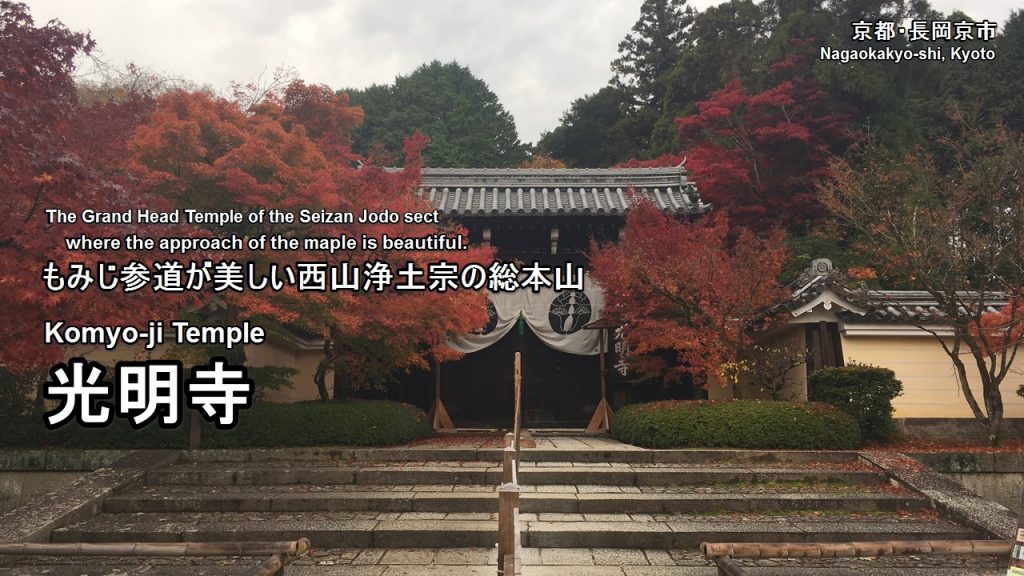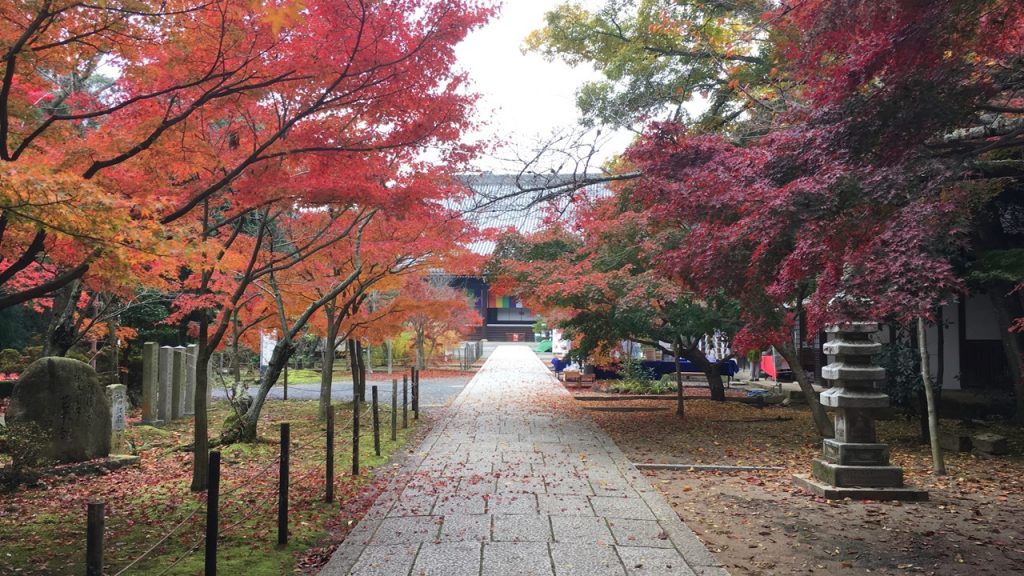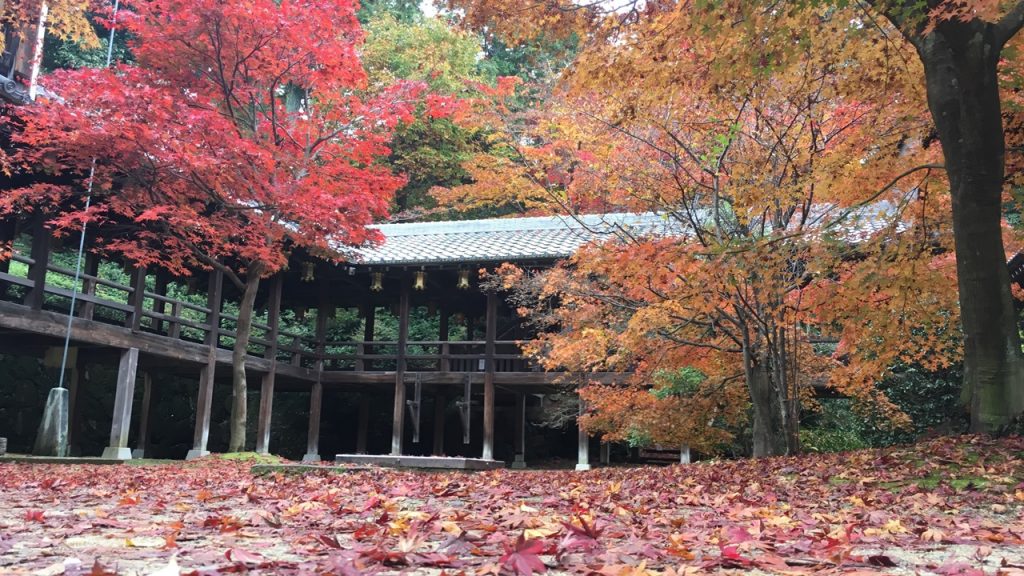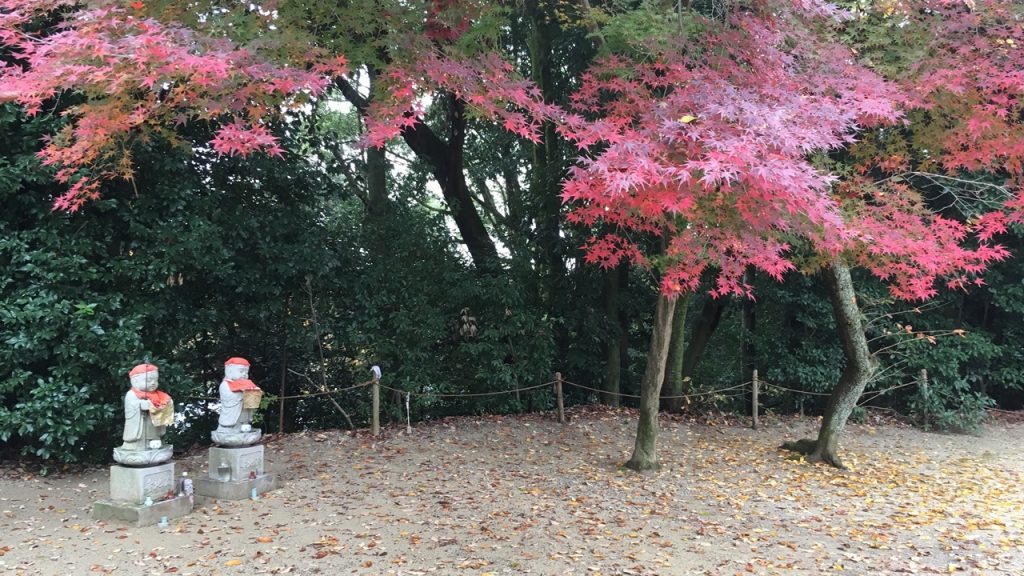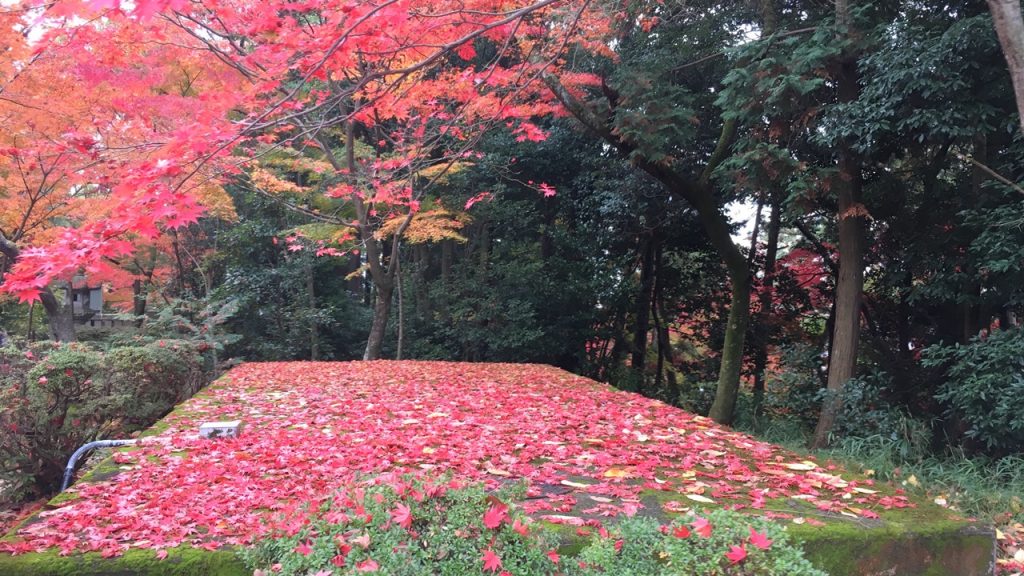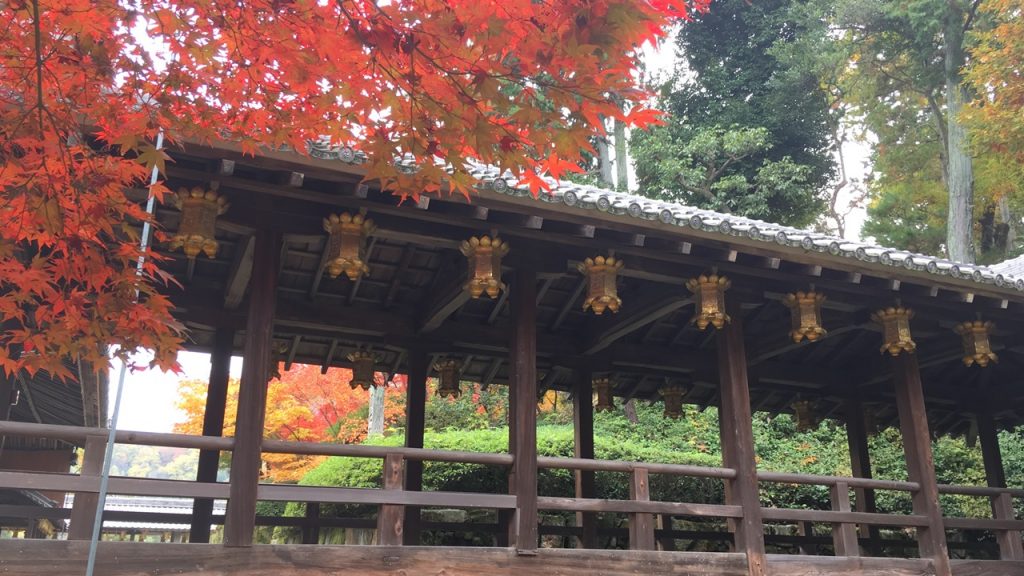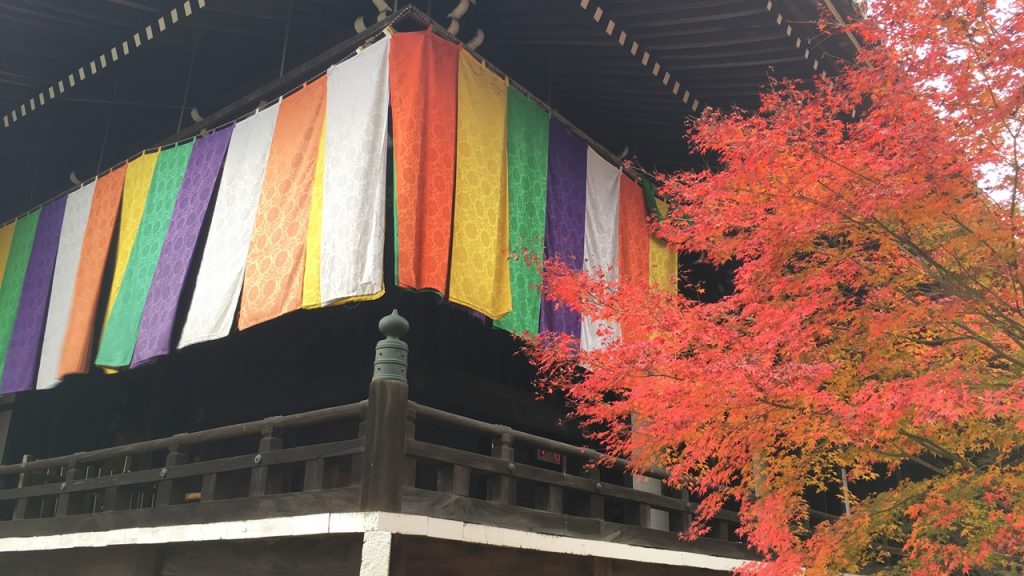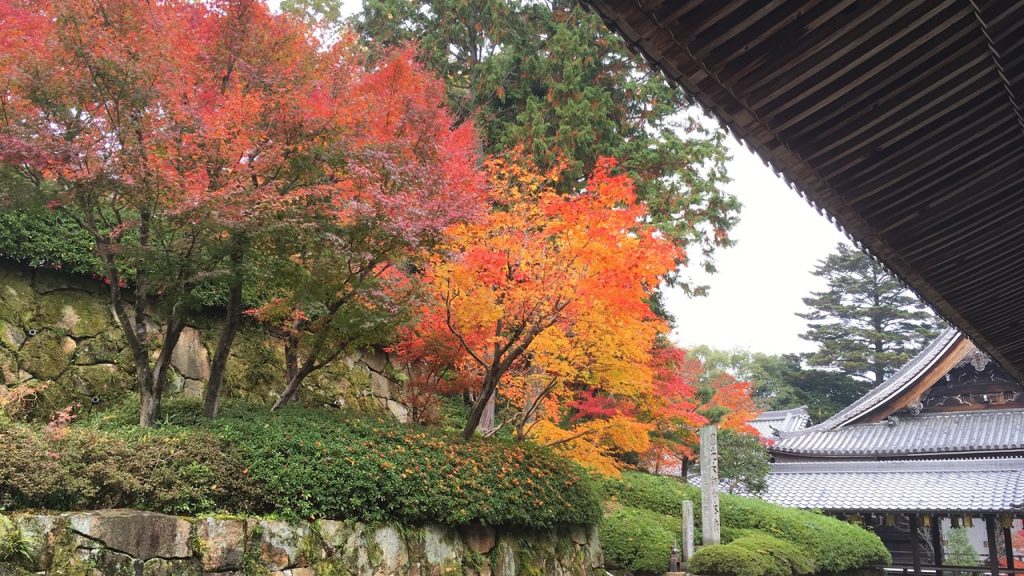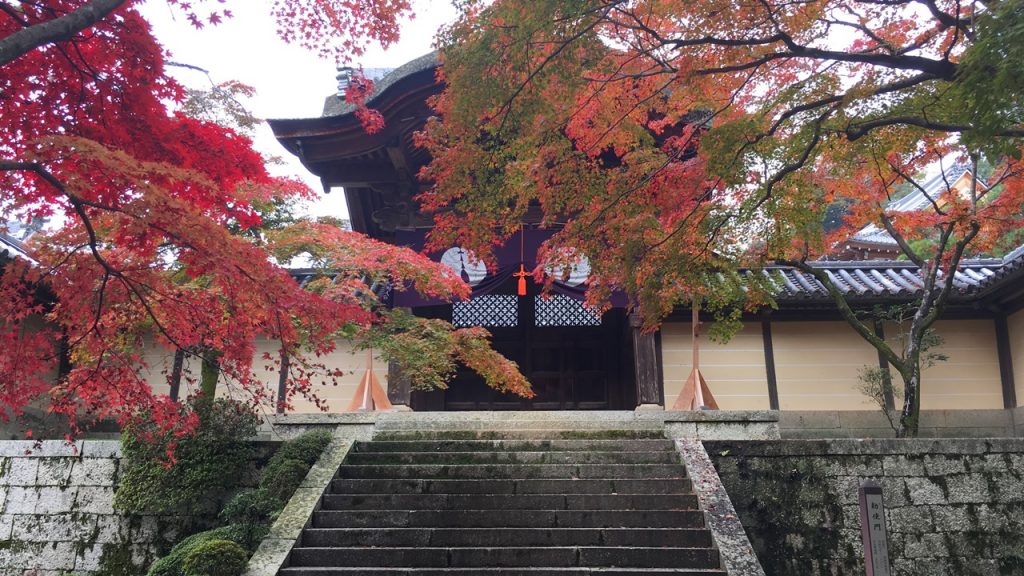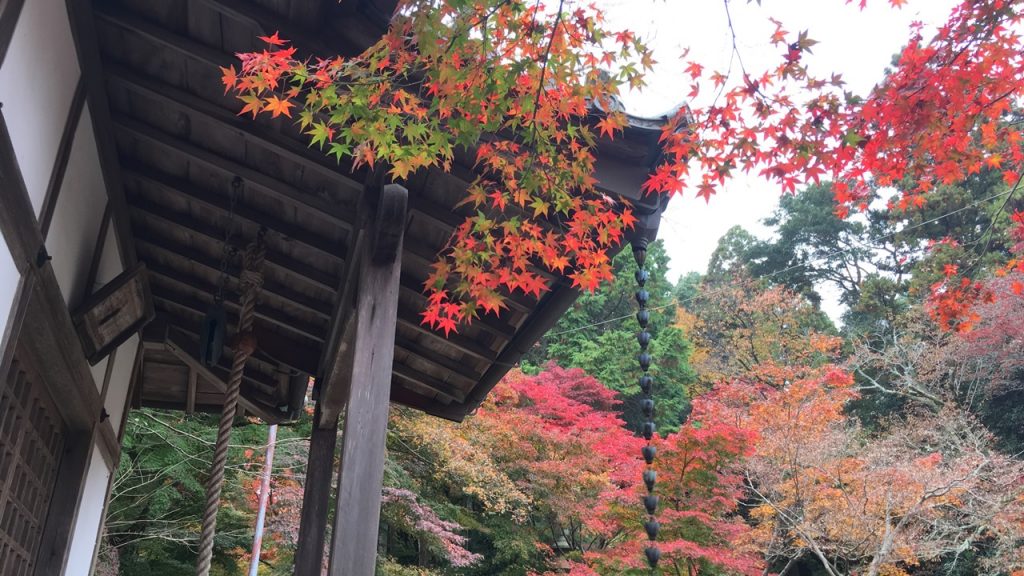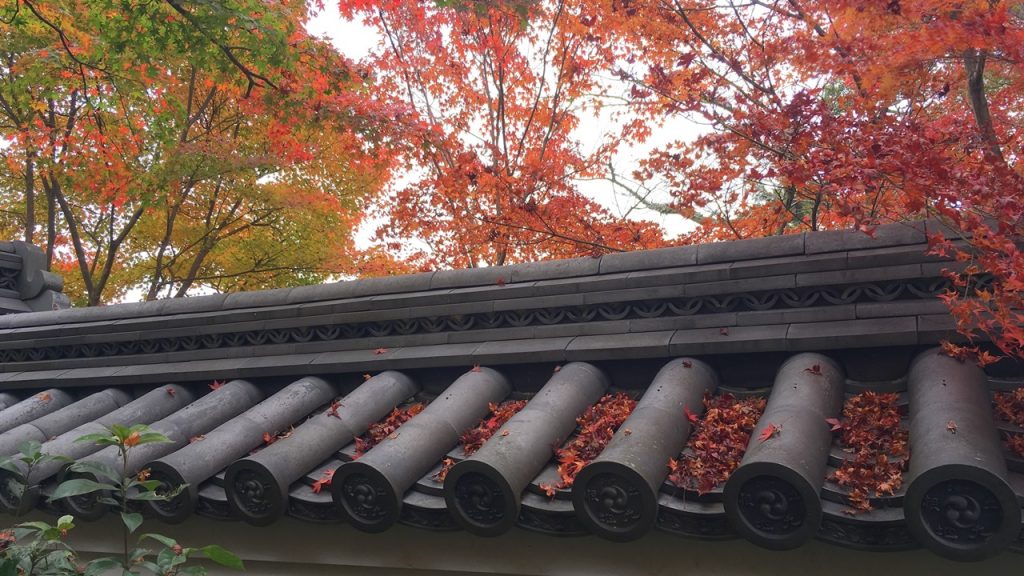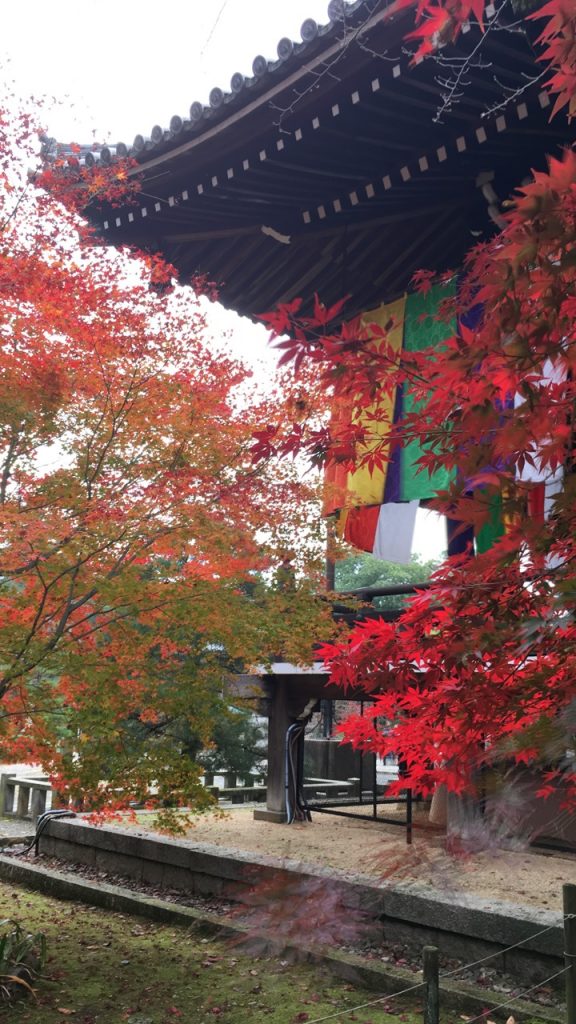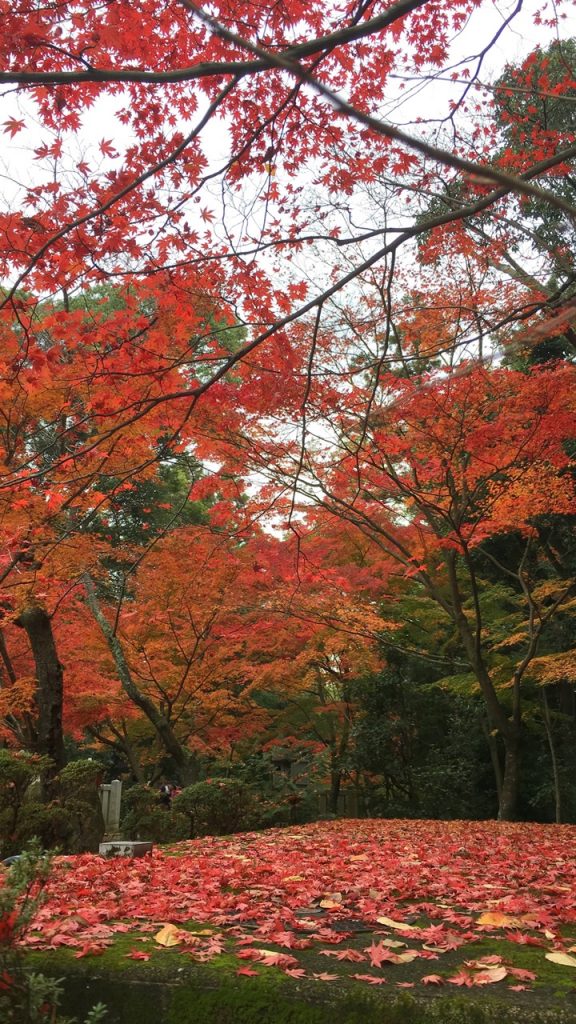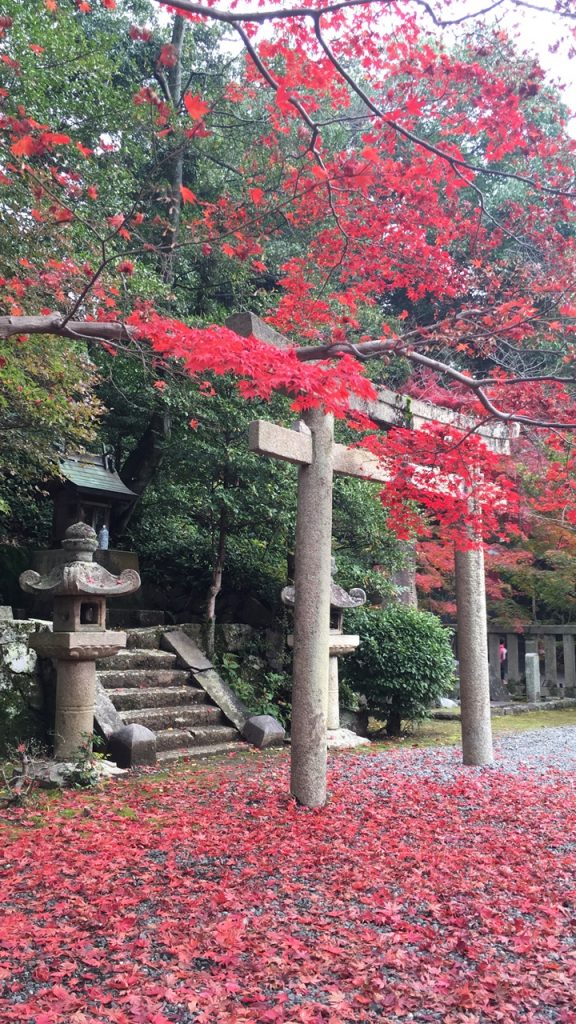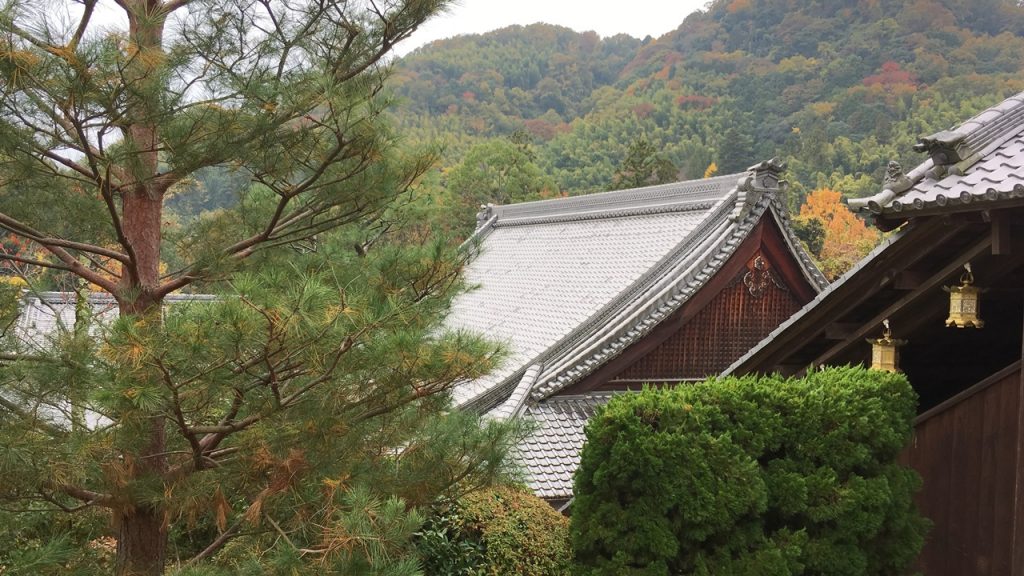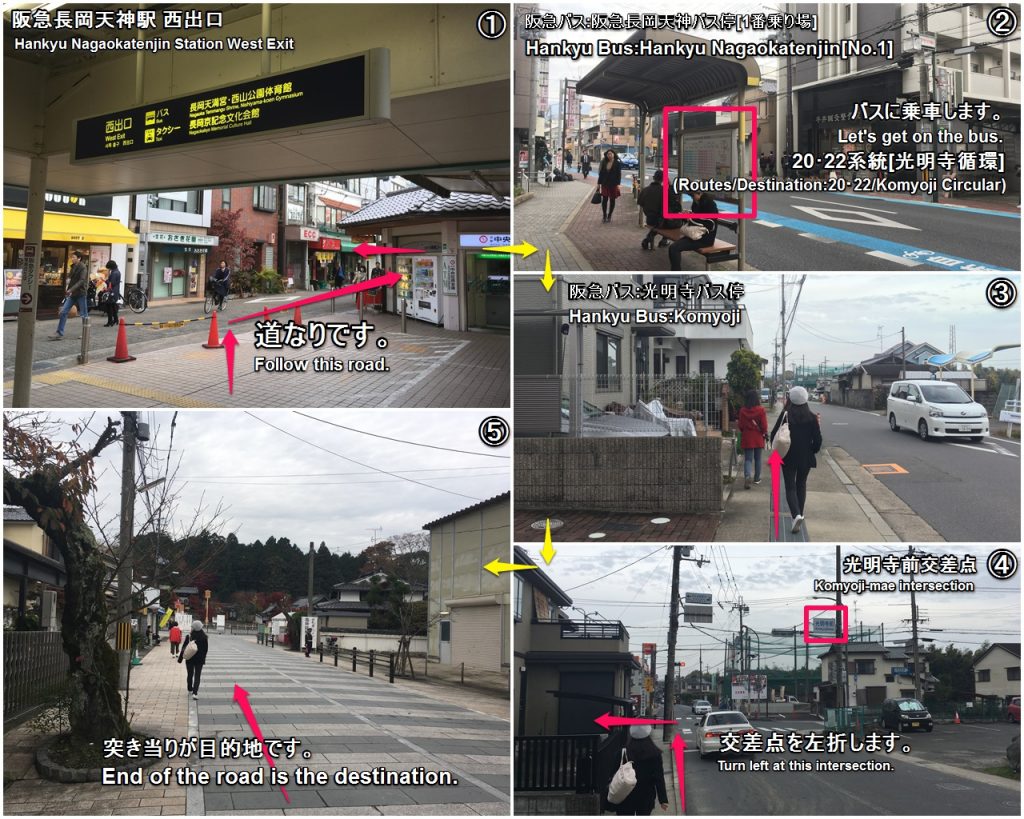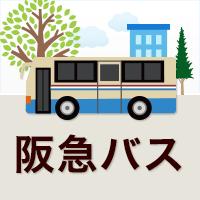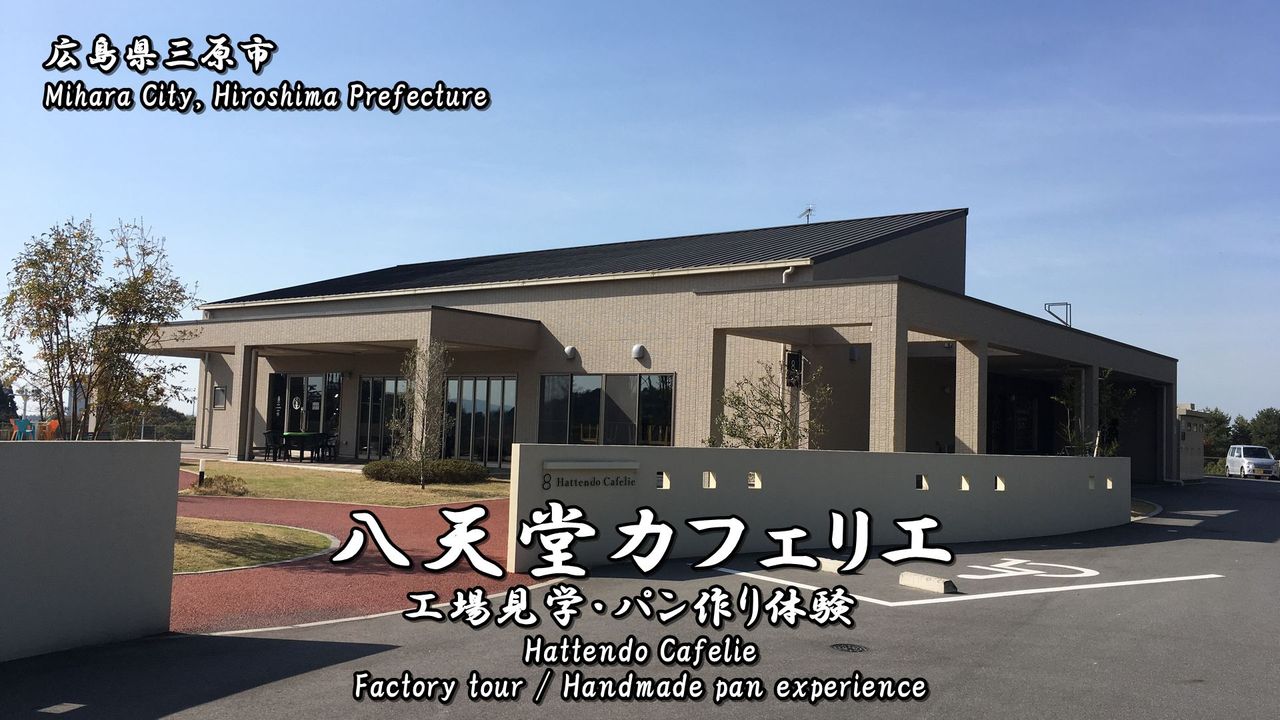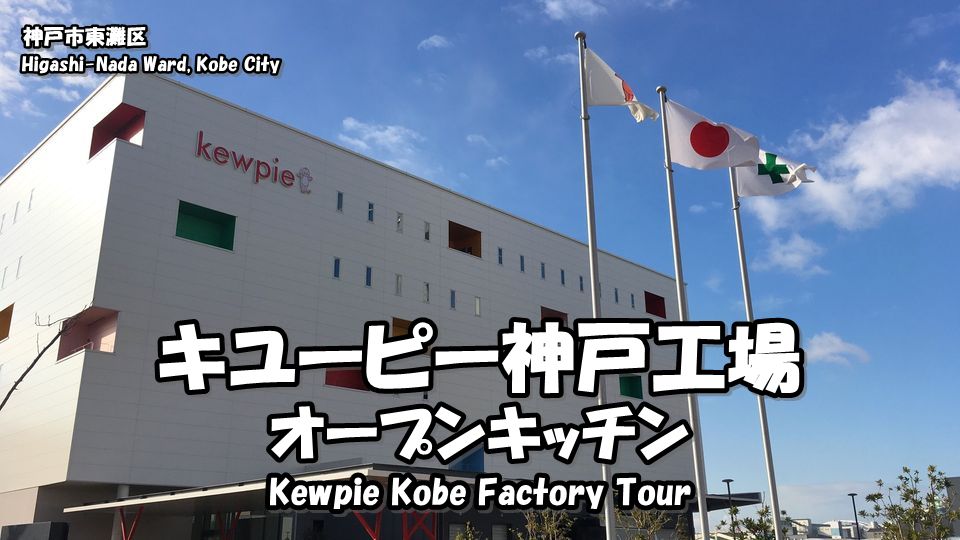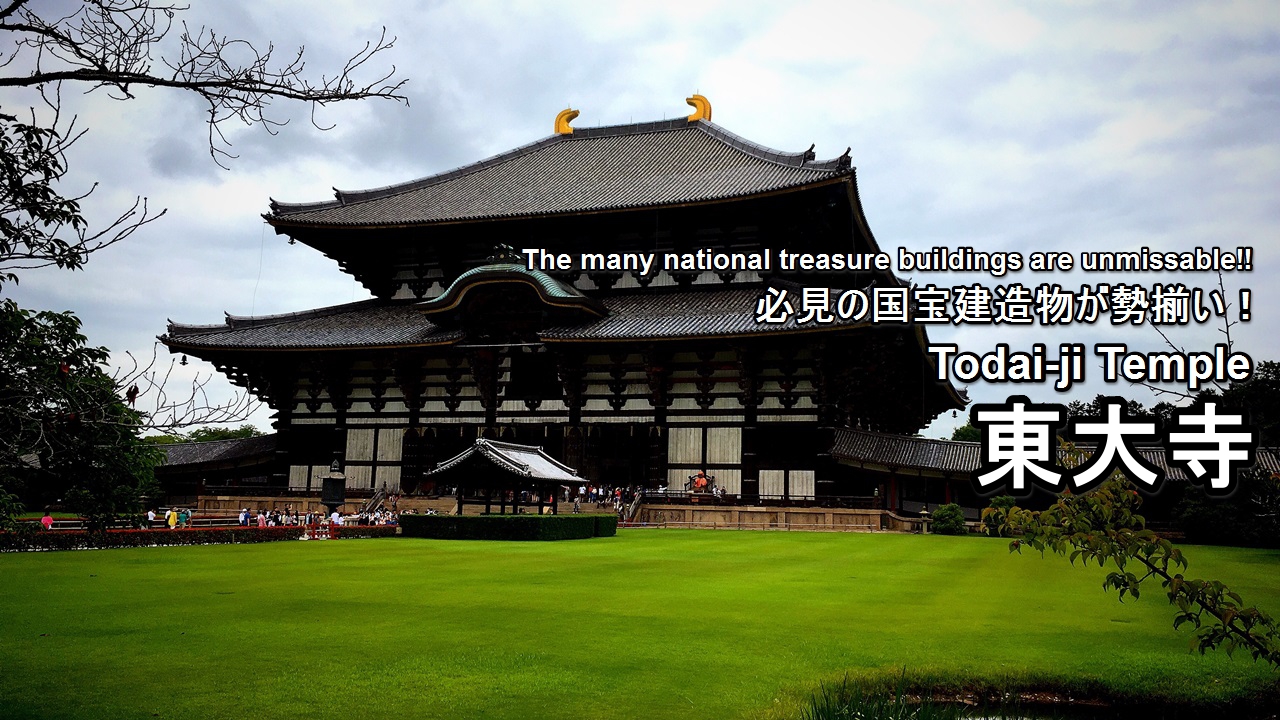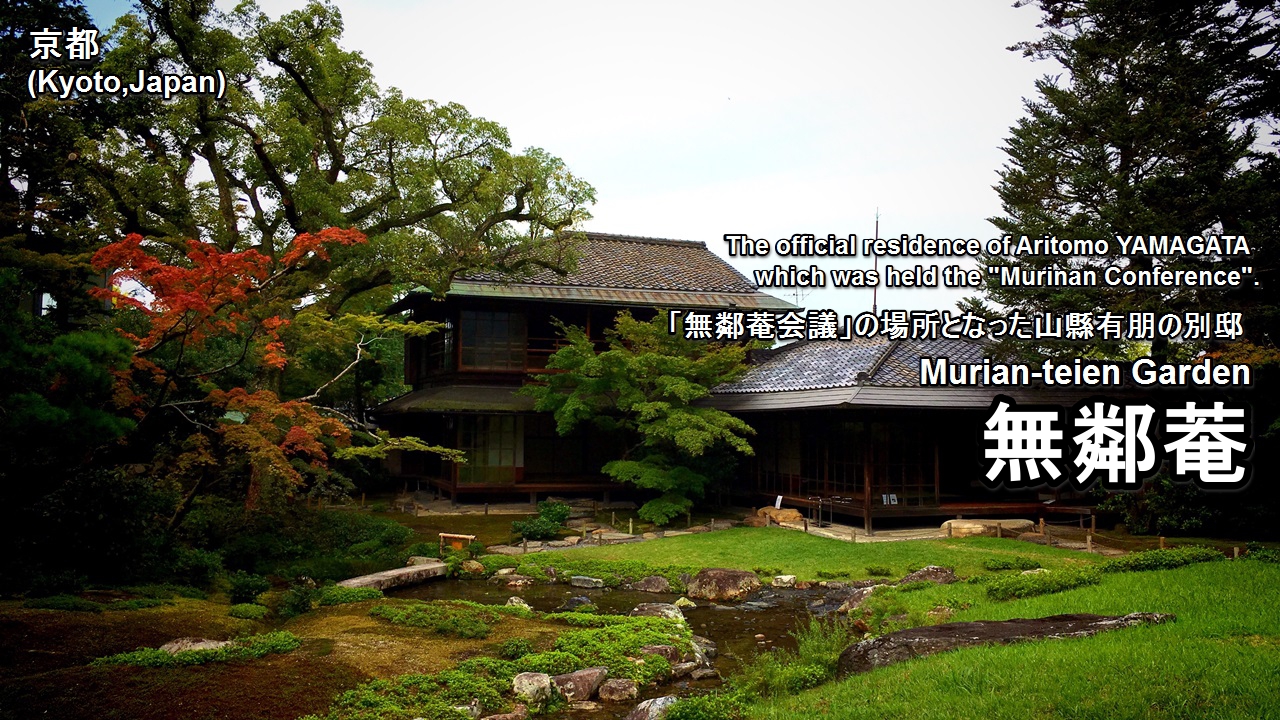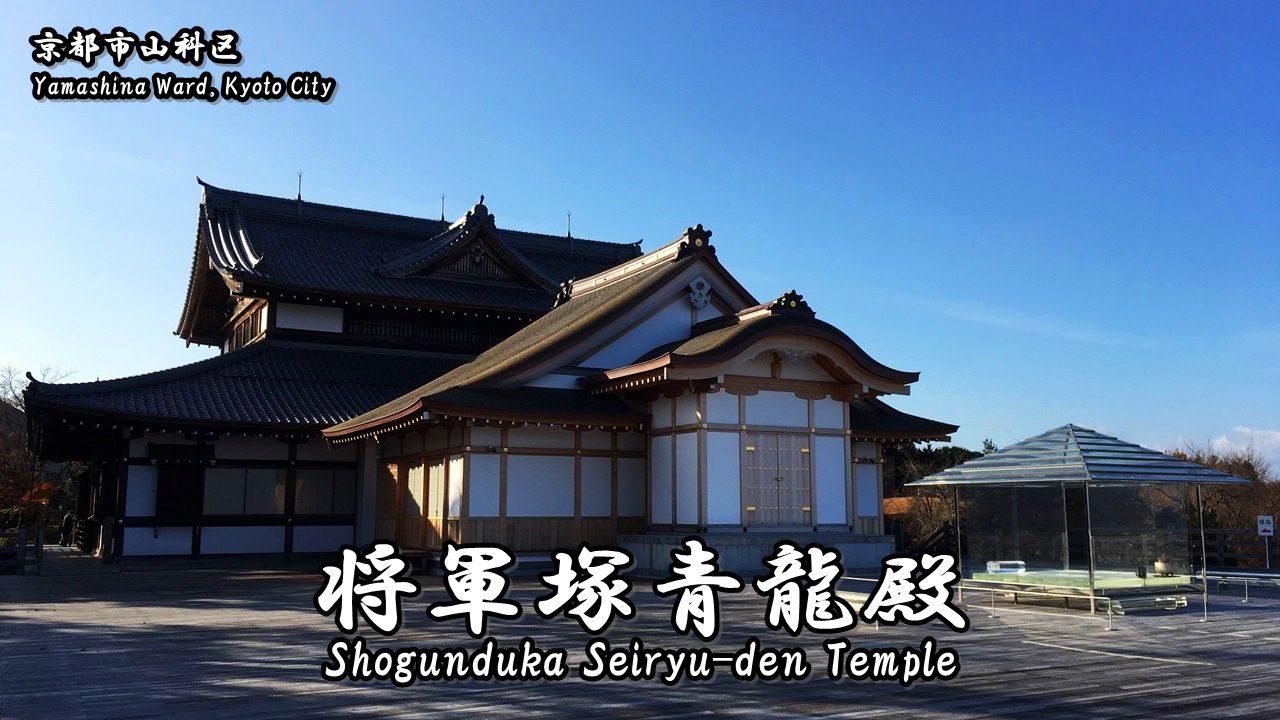Komyo-ji Temple is the Grand Head Temple of the Seizan Jodo sect which is located in Ao, Nagaokakyo City, Kyoto Prefecture.
This Temple began with the establishment of Nenbutsu-zanmai-in Temple in 1198 by Rensho, who worshipped Honen and became his disciple.
There is the approach called the approach of maples in this temple.
Because many maples are planted on both sides of this approach, it is very beautiful in autumn.
So, I went to Komyo-ji Temple the other day.
Because the autumn leaves of this temple is very famous, it was crowded with many tourists.
Contents:
- About Komyo-ji Temple
- Colored leaves of Komyo-ji Temple
- Highlights of Komyo-ji Temple
- Goshuin of Komyo-ji Temple
- How to get to Komyo-ji Temple
1.About Komyo-ji Temple
Open:9:00~18:00(Period of colored leaves:9:00~16:00)
Admission Fee:500 yen(High school student or older)*Only period of colored leaves
Address:26-1, Ao, Nagaokakyo-shi, Kyoto, 617-0811, Japan
Phone Number:+81-75-955-0002
Komyo-ji Temple is the Grand Head Temple of the Seizan Jodo sect which is located in Ao, Nagaokakyo City, Kyoto Prefecture.
A principal idol of this temple is Amida Nyorai (Amitabha Tathagata).
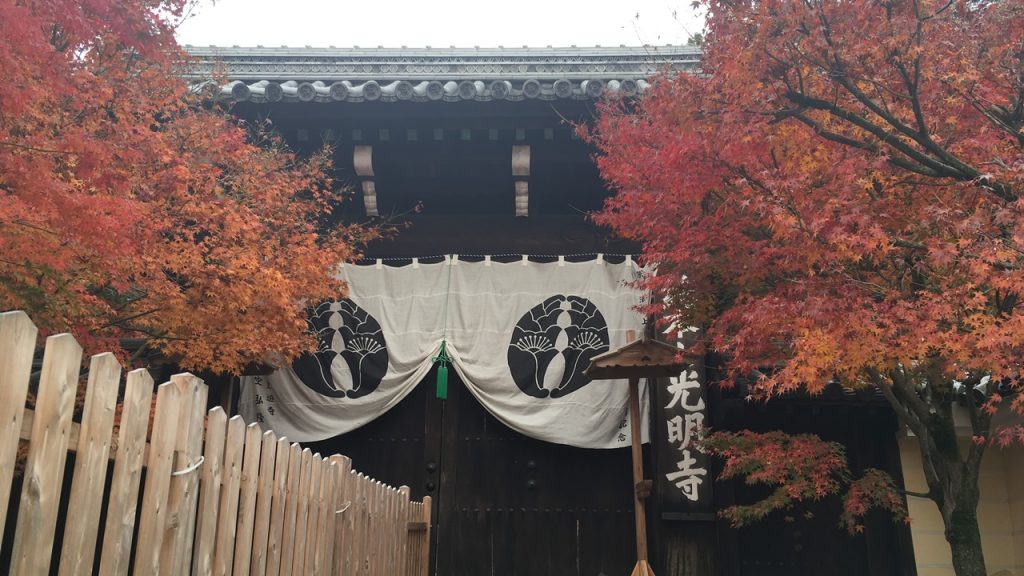
An admission fee is 500 yen (High school student or older).
But it is only period of colored leaves.
(The Japanese garden does not open other than the period of colored leaves.)
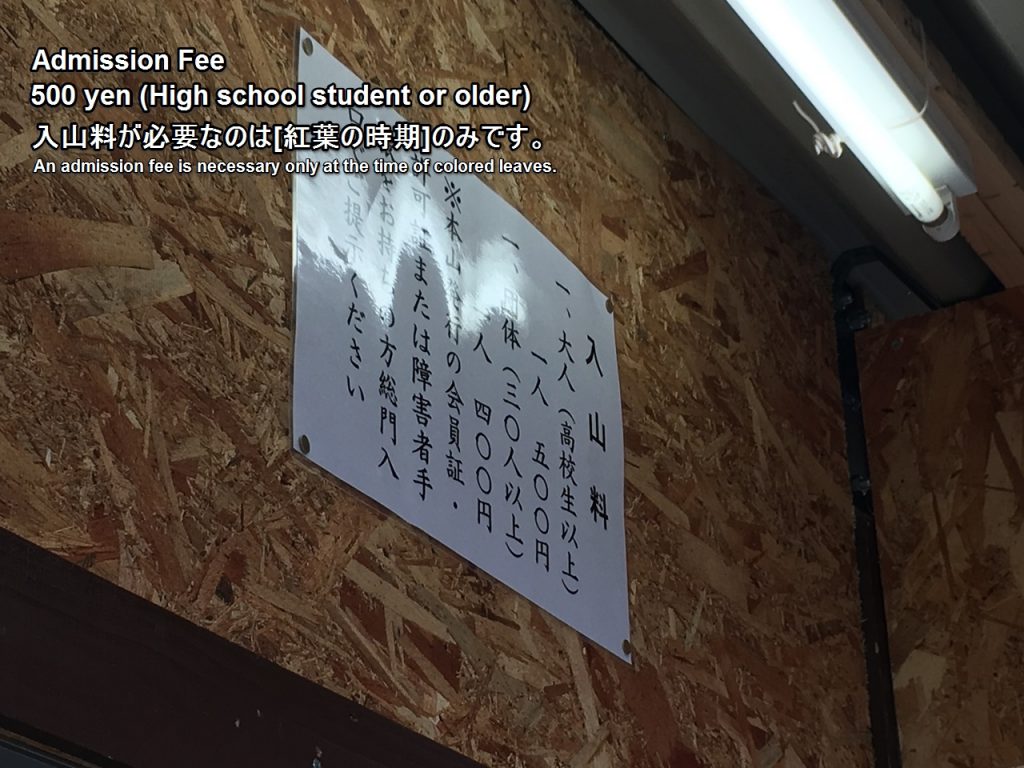
The area of the precincts is approximately 70,000 square meters.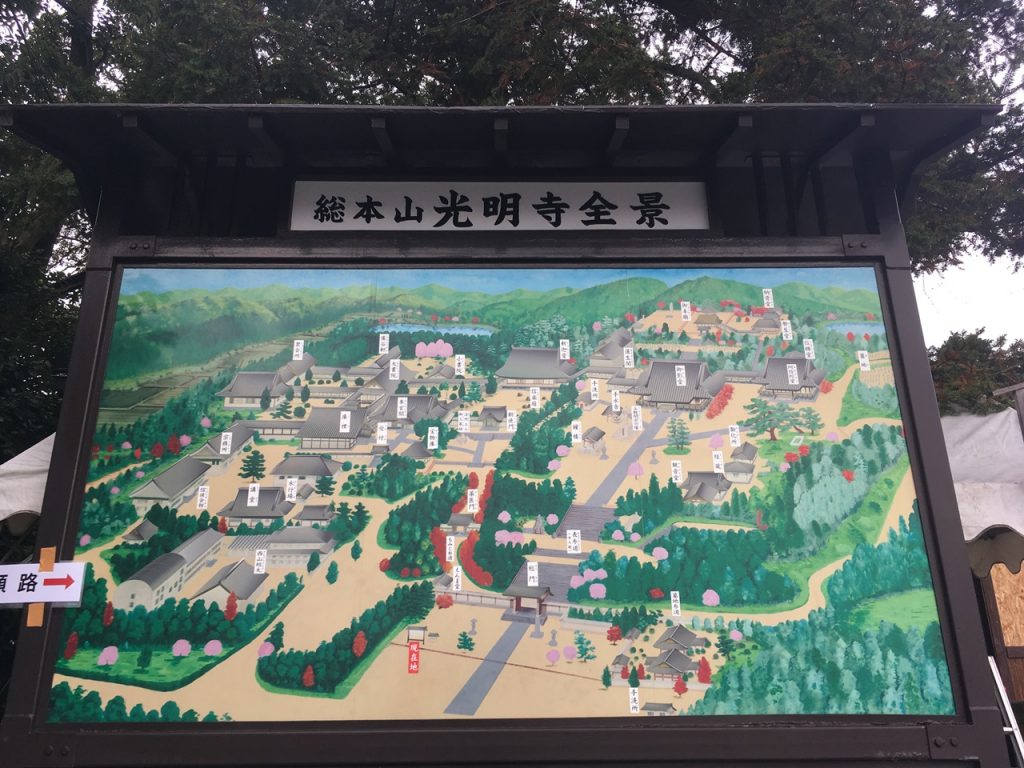
This temple is said to be the place where Honen who is an initiator of the Jodo sect of Buddhism advocated a prayer to Buddha for the first time.
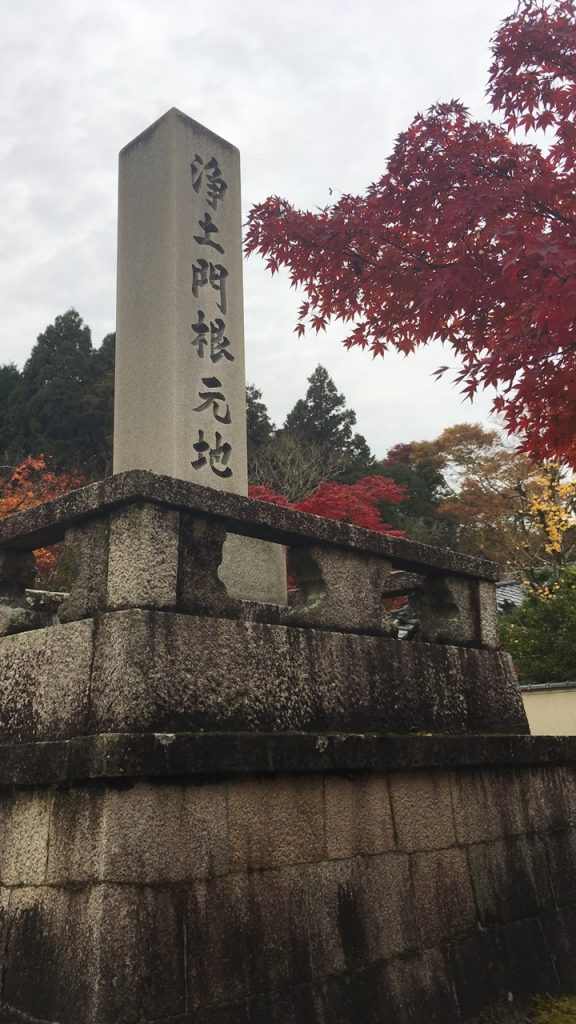
There is the approach called the approach of maples in this temple.
Because many maples are planted on both sides of this approach, it is very beautiful in autumn.
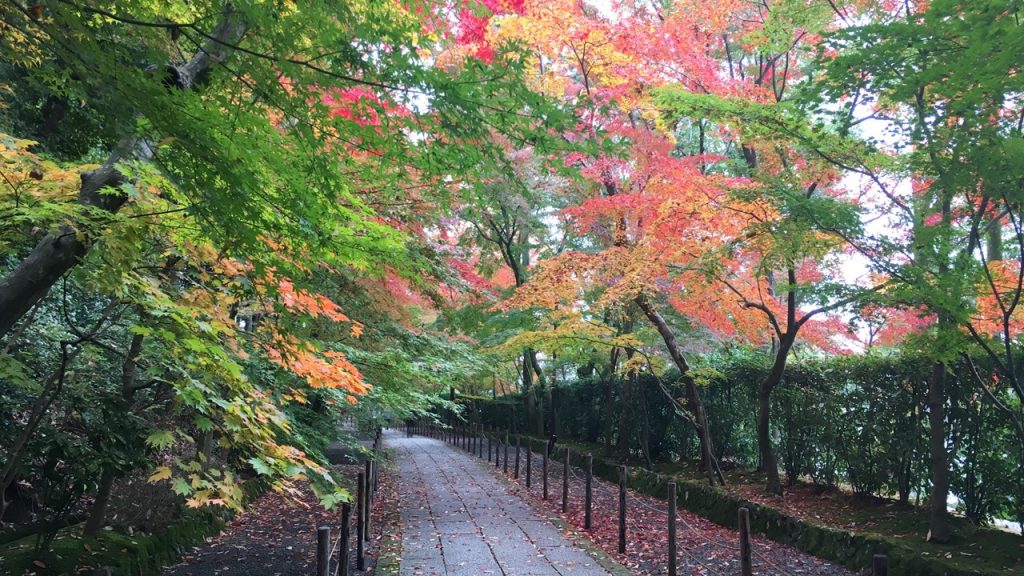
2.Colored leaves of Komyo-ji Temple
I went on November 21.
The condition of the colored leaves in that day was approximately 70%.
*Because the colored leaves of this temple is very famous, the tourist of the group comes from early morning.
From this point on, let’s watch a photograph of this temple’s autumn leaves.
How did you like it?
Next, let’s watch the highlight of Komyo-ji Temple!!
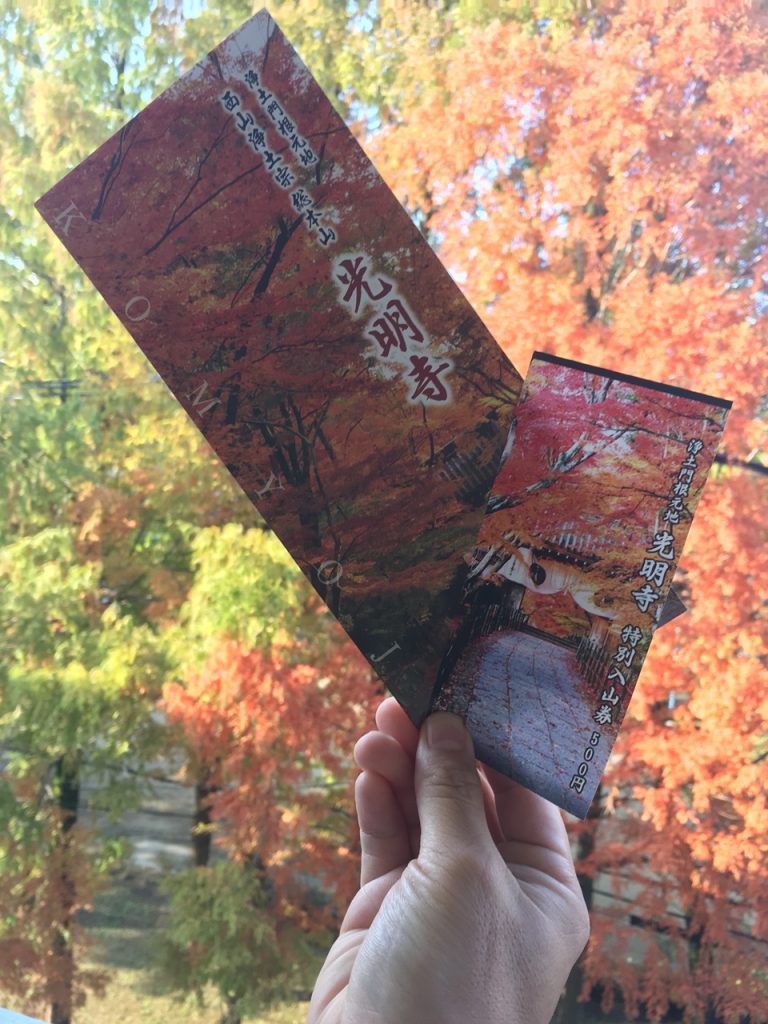
3.Highlights of Komyo-ji Temple
- 総門:Somon gate (Main gate)
- 表参道:Omote-sando (Front approach)
- もみじ参道:Momiji-sando (approach of the maples)
- 薬医門:Yakui-mon gate
- 閻魔堂:Enma-do hall
- 御影堂:Miei-do hall
- 阿弥陀堂:Amida-do hall
- 観音堂:Kannon-do hall
- 経蔵:Kyozo (sutra repository)
- 鐘楼:Shoro (bell tower)
- 釈迦堂:Shaka-do hall
- 信楽庭:Shingyo-tei Garden
- 勅使門:Chokushi-mon gate (gate for Imperial Envoys)
- 大書院:Oshoin (Large study hall)
- 鎮守社:Chinju-sha shrine
●総門:Somon gate (Main gate)
This is Somon gate (Main gate) which was built in 1845 of the late Edo period.
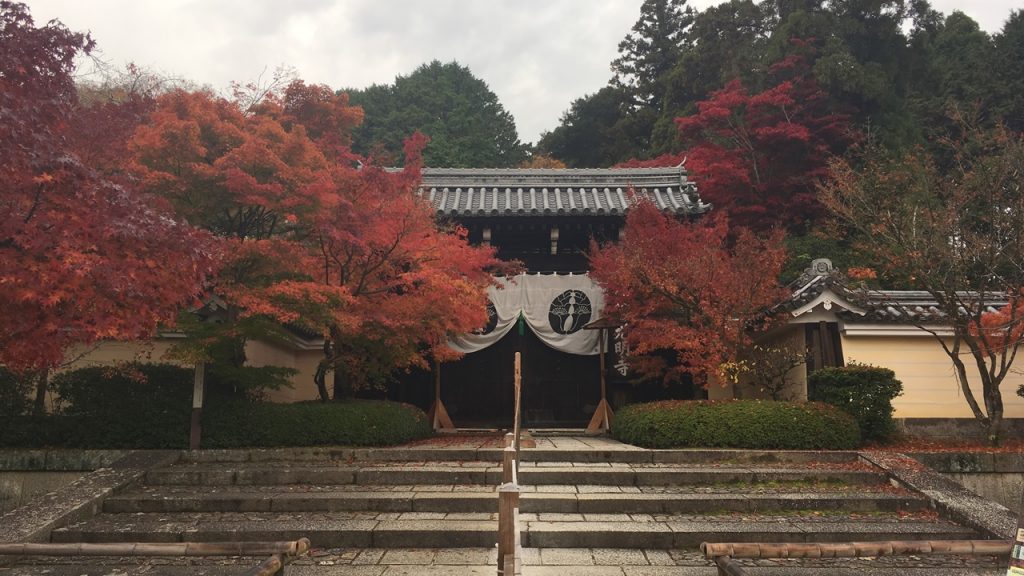
●表参道:Omote-sando (Front approach)
This is Omote-sando (Front approach) which leads from Somon gate (Main gate) to Miei-do hall.
Because a slope is gentle, this approach is easy to walk also for the woman.
Therefore this approach is also called Nyonin-zaka (Women’s Slope).
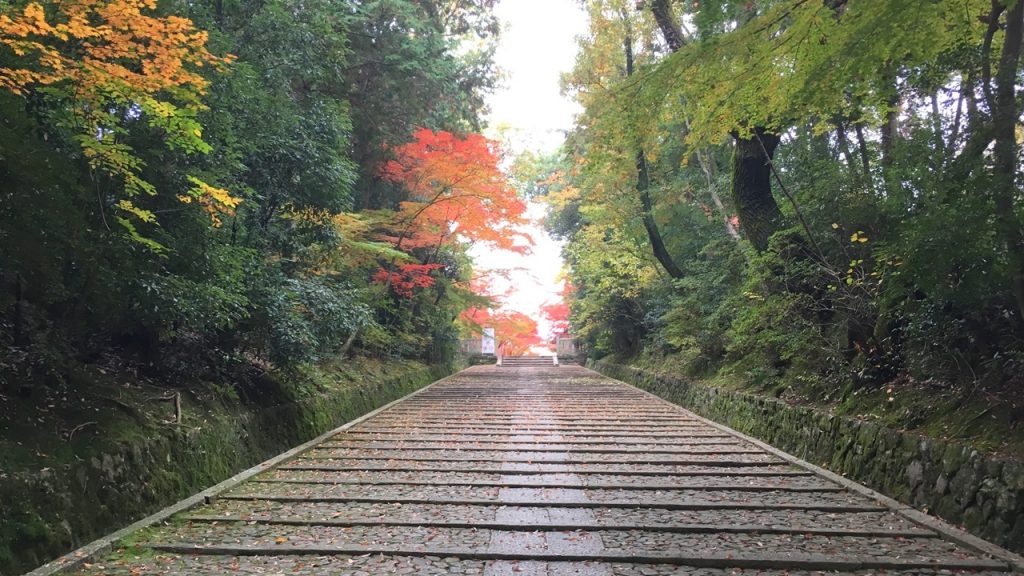
●もみじ参道:Momiji-sando (approach of the maples)
The approach which leads to the left side of Somon gate (Main gate) is Momiji-sando (approach of the maples).

●薬医門:Yakui-mon gate
The gate which was built in the center of Momiji-sando is Yakui-mon gate.

●閻魔堂:Enma-do hall
The building which was built in the left side of Somon gate (Main gate) is Enma-do hall.
Enma is a king who is believed to preside over hell.
In addition, Enma is also an incarnation of Bodhisattva.
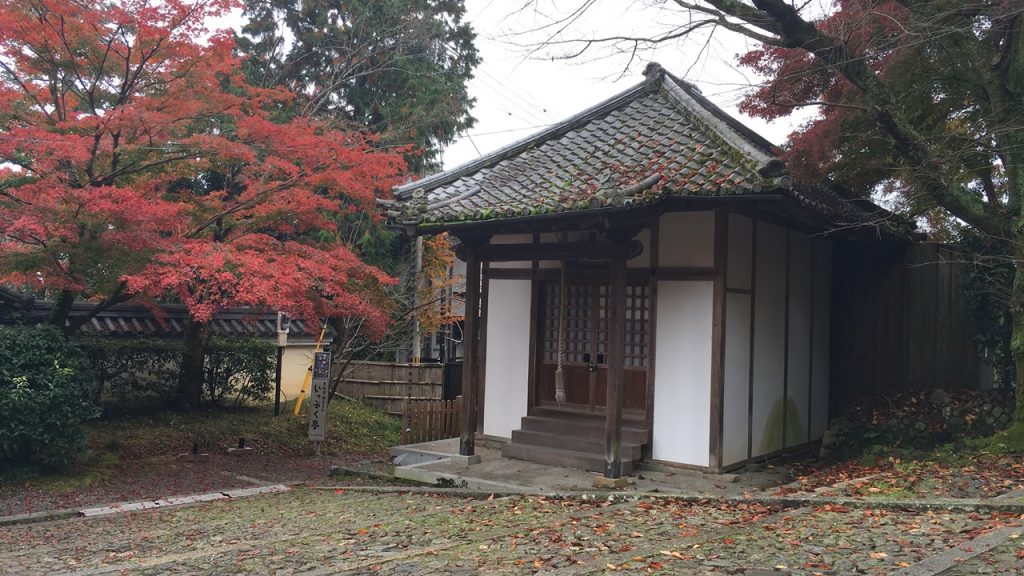
●御影堂:Miei-do hall
A building which was built at the end of Omote-sando is Miei-do hall.
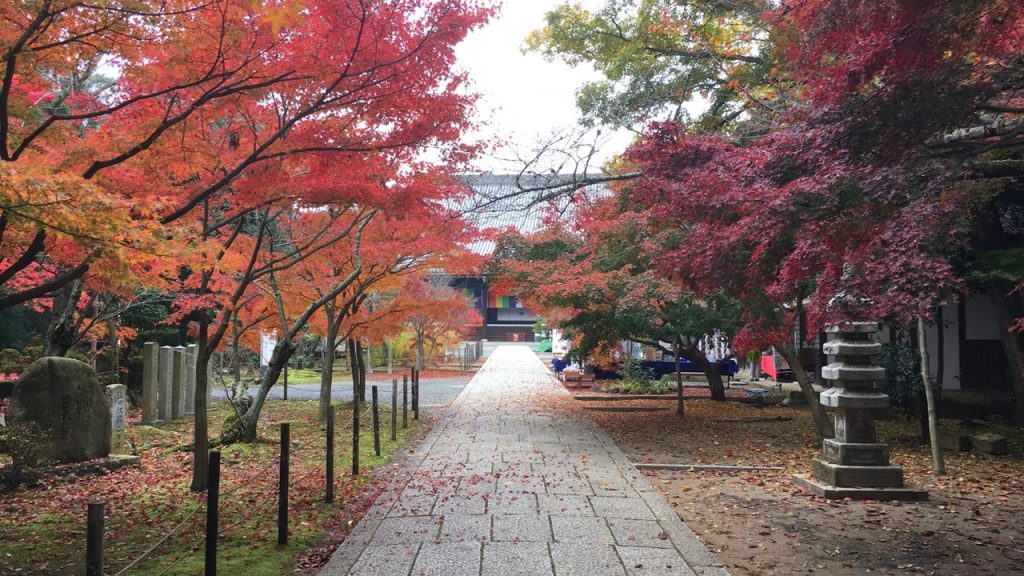
Miei-do hall was built in 1754 of the latter half of Edo period.
This building is used as Hondo (Main temple).
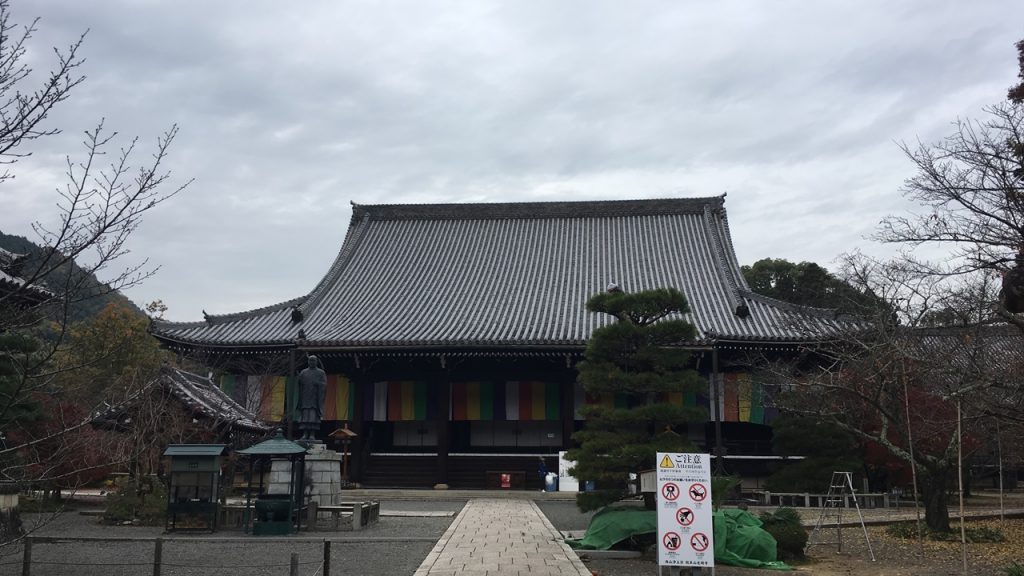
Bronze statue of Honen is enshrined in front of this building.
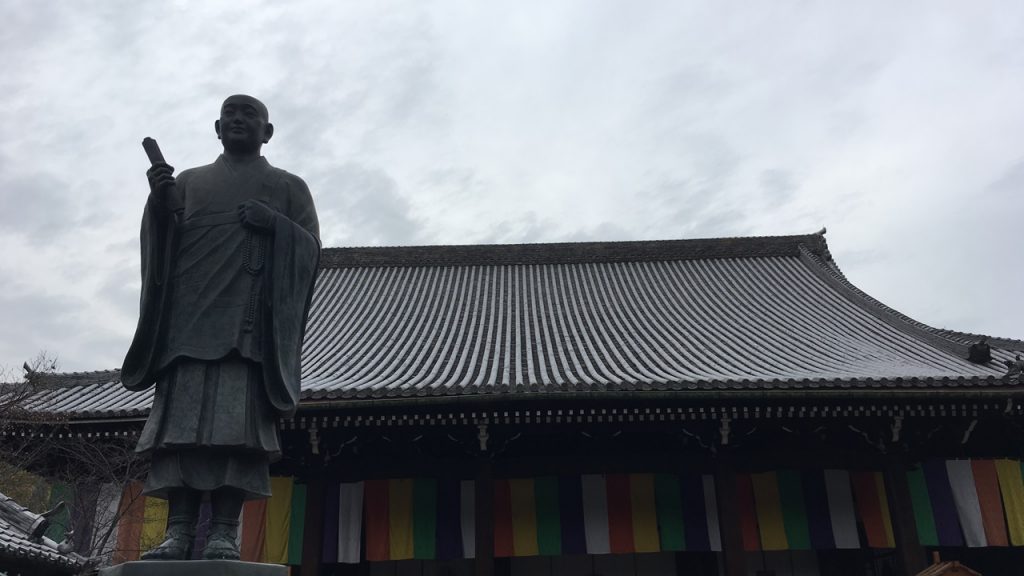
●阿弥陀堂:Amida-do hall
This is Amida-do hall which was rebuilt in 1799 of the latter half of Edo period.
Statue of the Amida Nyorai which is the principal idol of this temple is enshrined in this building.

●観音堂:Kannon-do hall
This is Kannon-do hall.
Statue of the eleven-faced one thousand-armed Kannon Bosatsu is worshiped in this building.
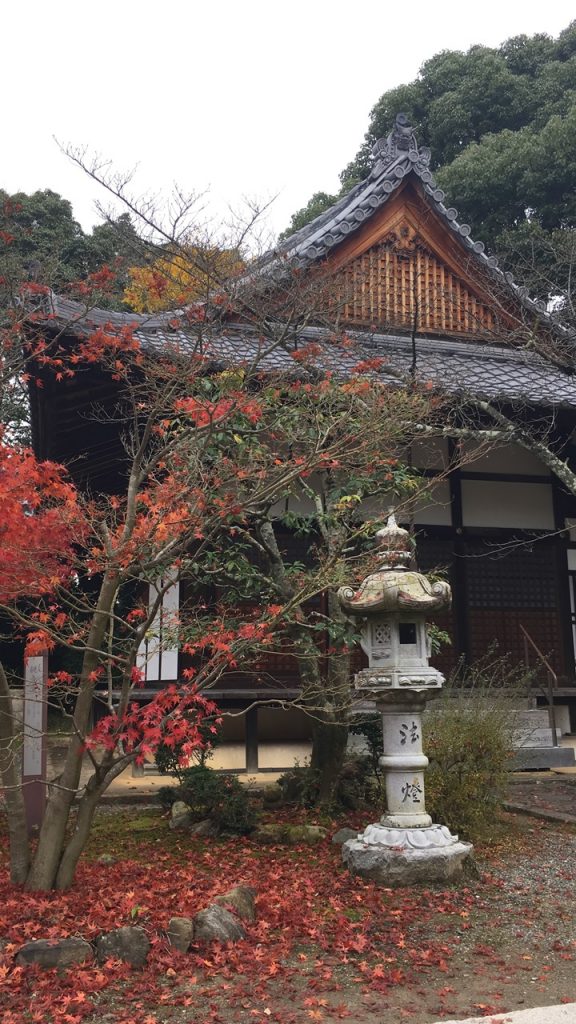
●経蔵:Kyozo (sutra repository)
This is Kyozo (sutra repository).

●鐘楼:Shoro (bell tower)
This is Shoro (bell tower) which was built in 1657 of the early Edo period.
This building is one of the oldest building in this temple.
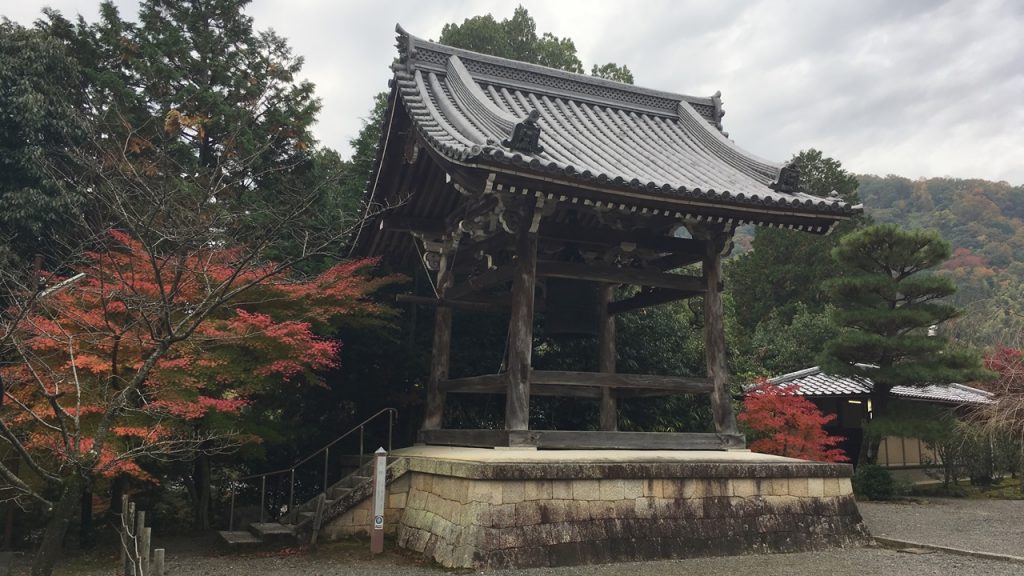
●釈迦堂:Shaka-do hall
This building is used as Hojo (Abbot’s Quarters).
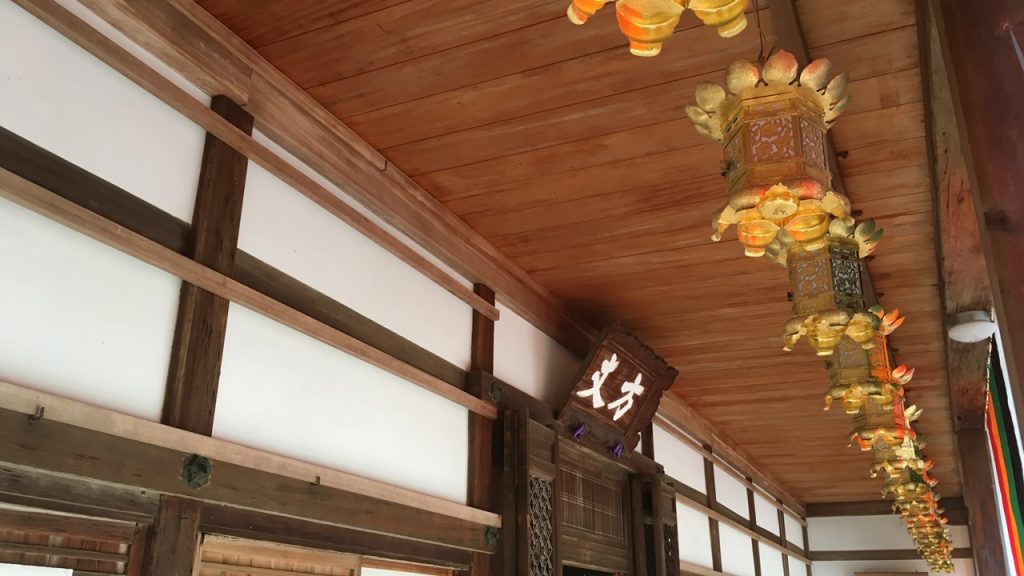
●信楽庭:Shingyo-tei Garden
There is a garden which is called Shingyo-tei Garden in front of Shaka-do hall.
This garden is a garden with dry landscape.
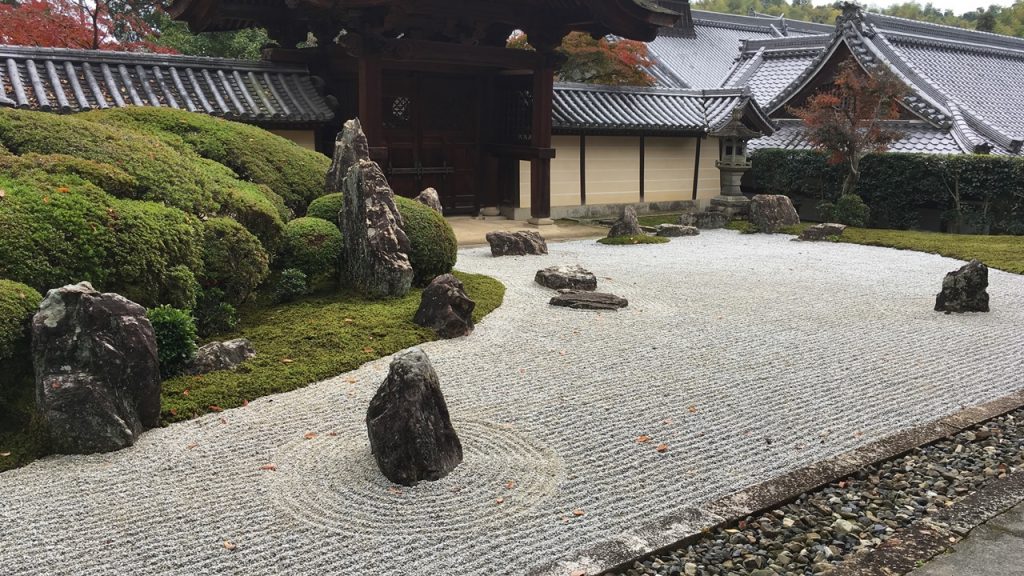
●勅使門:Chokushi-mon gate (gate for Imperial Envoys)
This is Chokushi-mon gate (gate for Imperial Envoys) which was built in 1860 of the late Edo period.
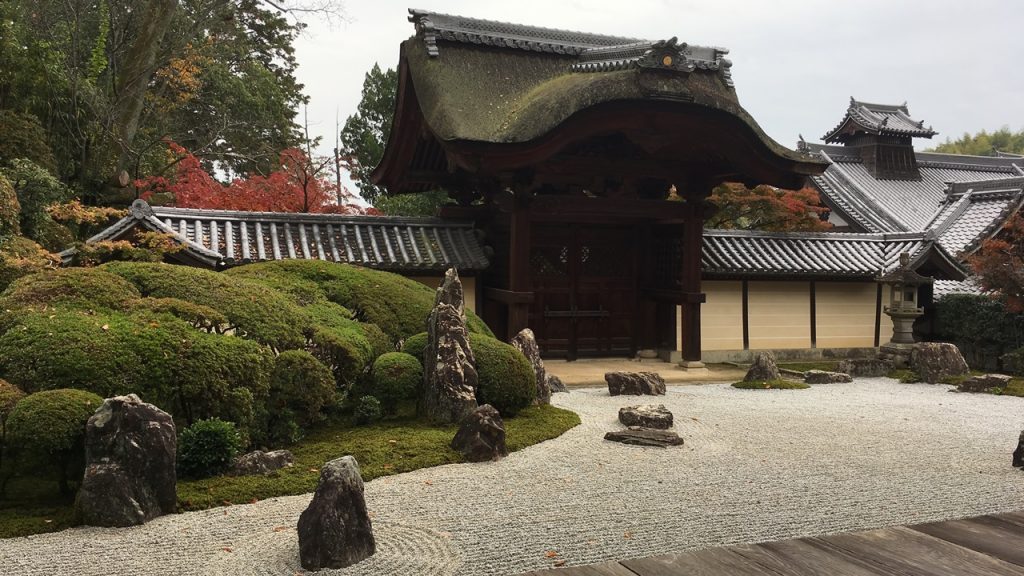
The gate to look at from the outside of garden.
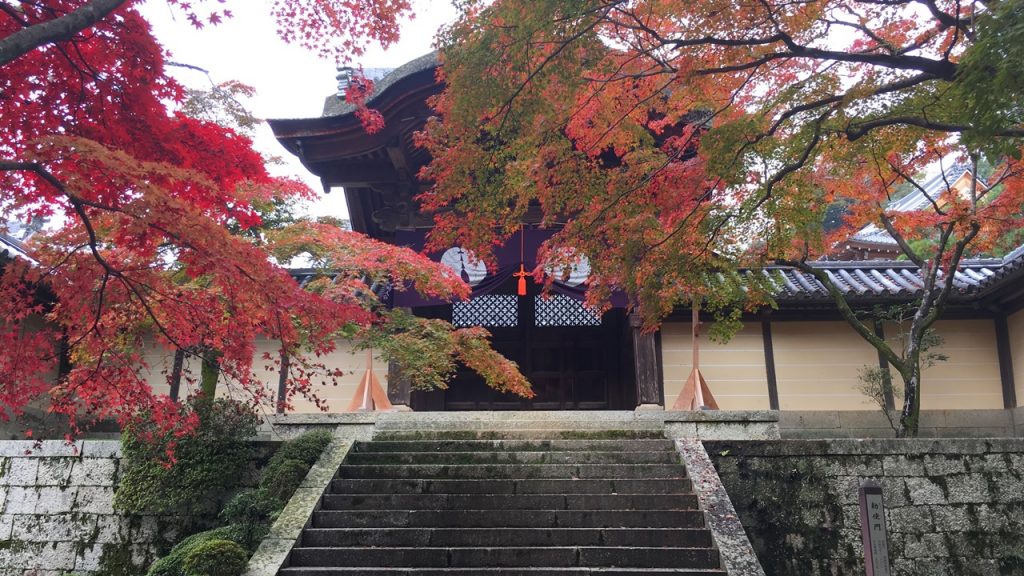
●大書院:Oshoin (Large study hall)
This is Oshoin (Large study hall).
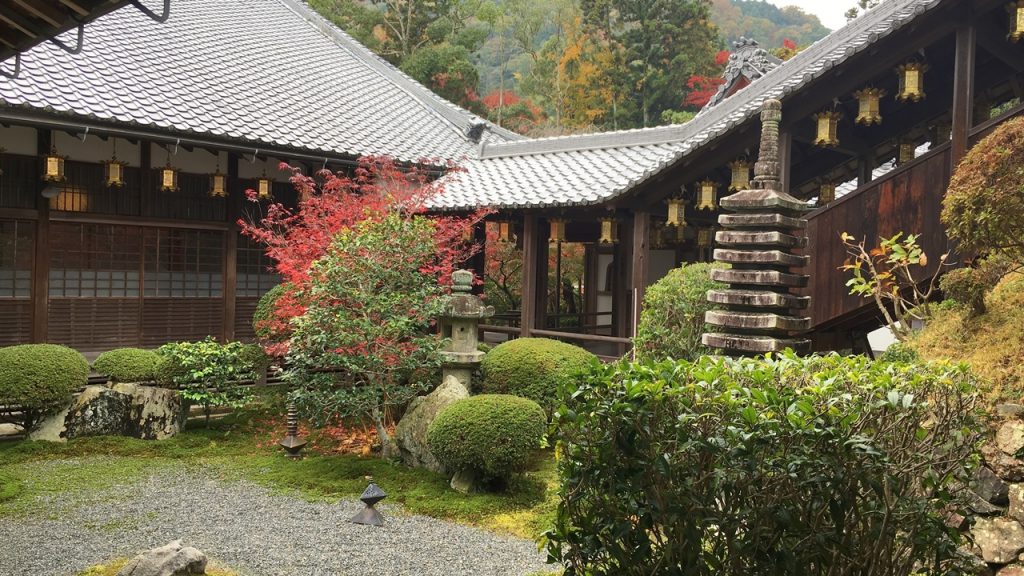
●鎮守社:Chinju-sha shrine
This is Chinju-sha shrine.
This is the Chinju (local Shinto deity) of Komyo-ji Temple.
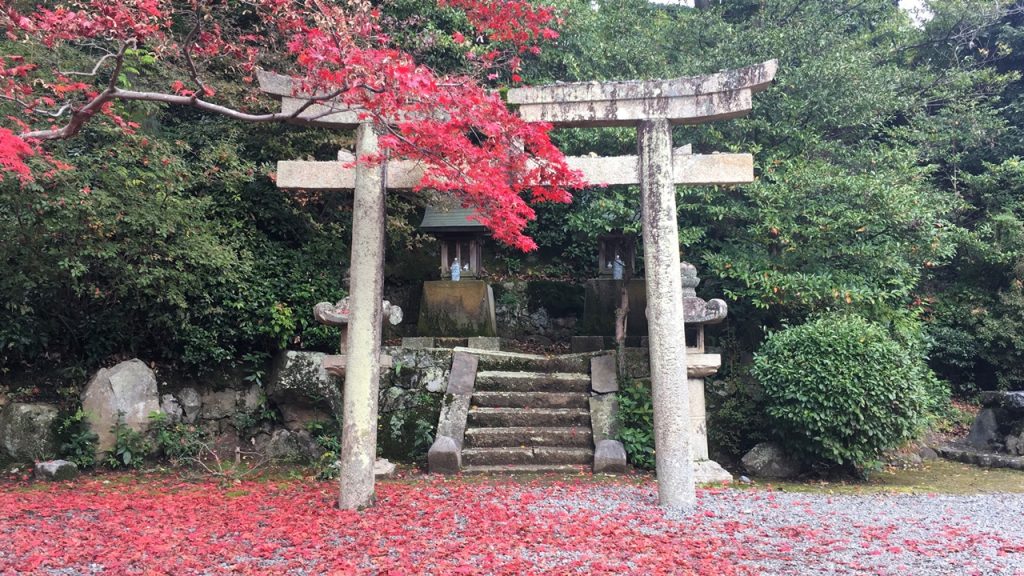
4.Goshuin of Komyo-ji Temple
This Temple’s Sumigaki(The words which was written with a sumi(black ink)) is “浄土門根元地(jodomon-kongenchi)” which means the birth place of the Jodo sect of Buddhism.
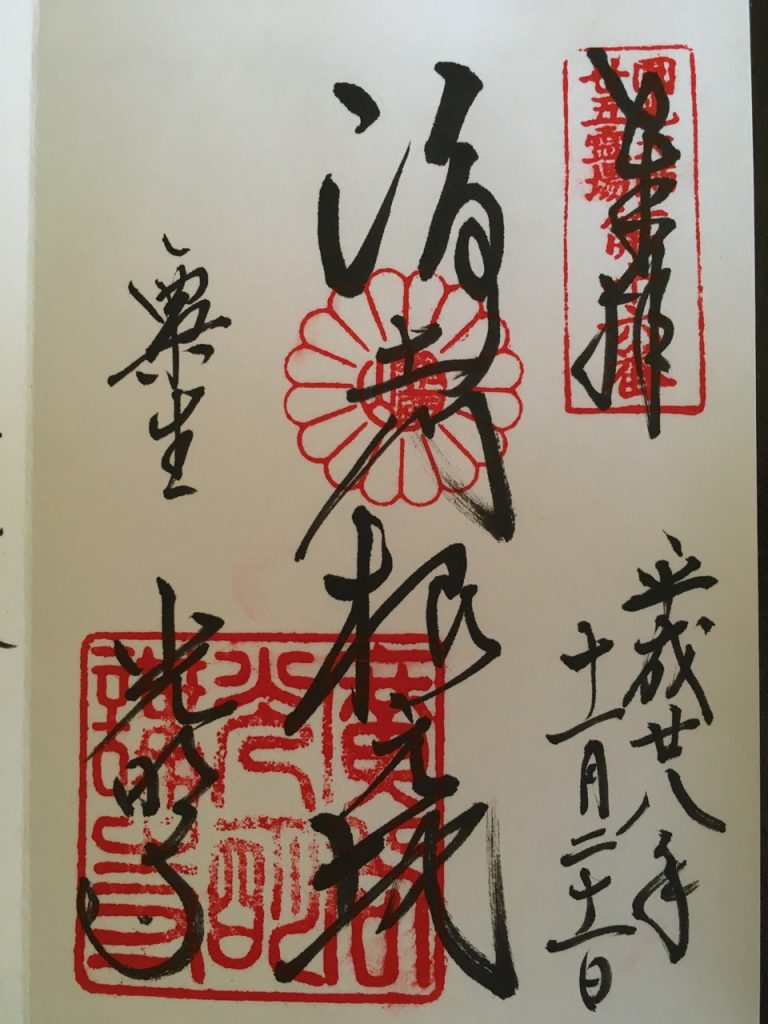
5.How to get to Komyo-ji Temple
ARVE Error: The [[arve]] shortcode needs one of this attributes av1mp4, mp4, m4v, webm, ogv, urlThe nearest station of Komyo-ji Temple is “Hankyu NagaokaTenjin Station” or “JR Nagaokakyo Station”.
■Route Example (From Osaka Station)
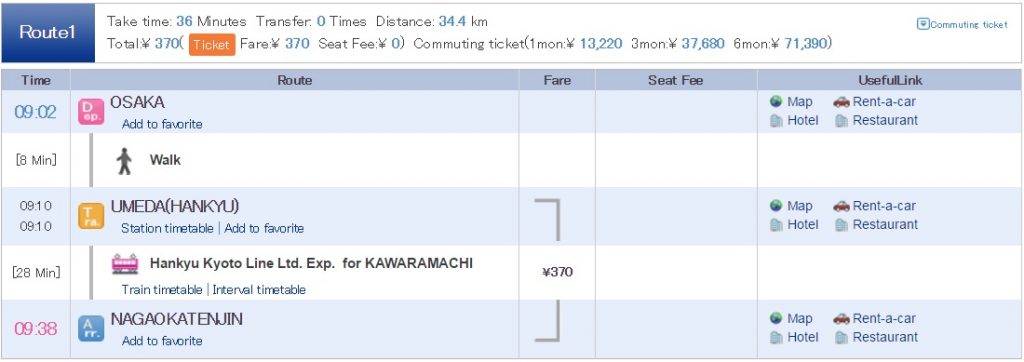
■Route Example (From Namba Station)
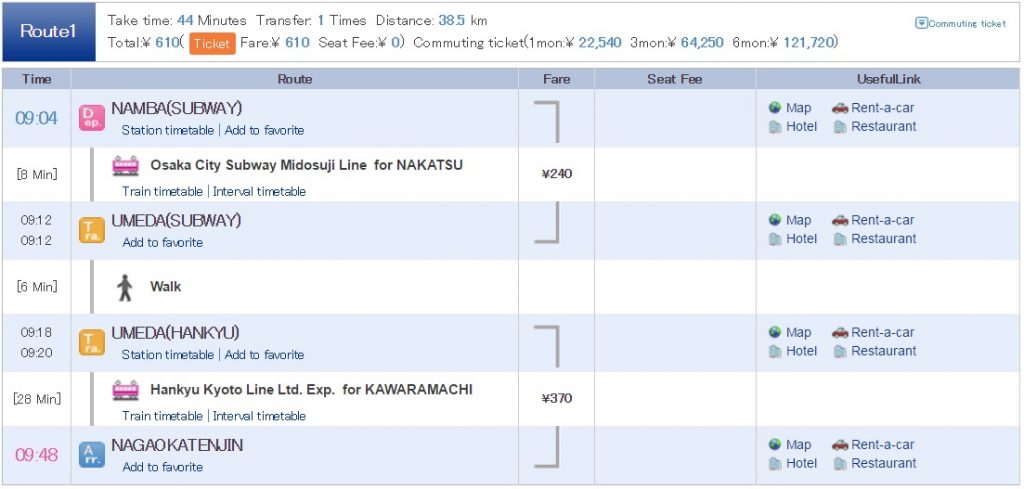
■Route Example (From Kyoto Station)

■Hankyu NagaokaTenjin Station→Komyo-ji Temple
We go by bus from NagaokaTenjin Sta. to Komyo-ji Temple.
(There is about 3 km from the station to the destination.)
①When you get on a bus from Hankyu NagaokaTenjin Station.
[Timetable]Route No.20・22
Bus company:Hankyu Bus
Routes/Destination:No.20・22[for Komyoji Circular]
Boarding bus stop:Hankyu Nagaokatenjin[Bus stop No.1]
Alighting bus stop:Komyoji
Bus fare:170 yen
Time required:About 10 min
②When you get on a bus from JR Nagaokakyo Station.
[Timetable]Route No.20・22
Bus company:Hankyu Bus
Routes/Destination:No.20・22[for Komyoji Circular]
Boarding bus stop:JR Nagaokakyo Sta.[Bus stop No.2]
Alighting bus stop:Komyoji
Bus fare:170 yen
Time required:About 16 min
How did you like it?
Please try to go.
Have a nice trip! XD
<Let’s search the sightseeing information of Kansai in Japan on ‘Japan’s Travel Manual‘!!>
<This site introduces the easiest way to get Japanese (Kansai) sightseeing spots to you.>

